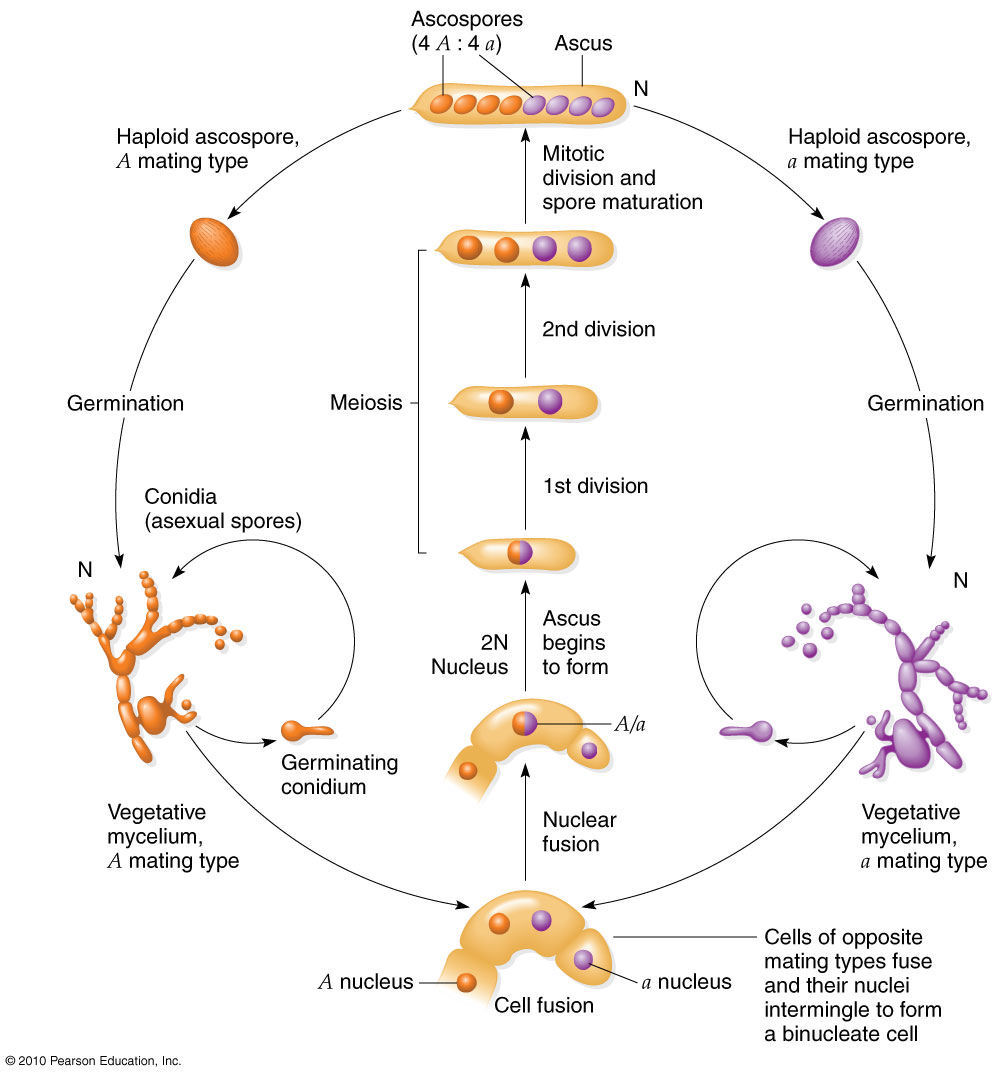
Lifecycle of
Neurospora, a
haploid bread mold
Given two haploid
vegetative mycelia of opposite mating types
(A
and a),
physical
contact allows haploid nuclei to fuse to form a diploid Aa nucleus.
The
nucleus undergoes two typical meiotic divisions to
form four haploid
gametes: A
and
a products
of
the second division remain in linear order in the ascus. A
further
mitotic division produces eight ascospores. Release of
the ascospores
and germination completes the life cycle.
For purposes of
genetic
experimentation, the significant features are (1) the
vegetative mold
is haploid, such that all metabolic pathways are
controlled by a single
allele, and (2) the separation of the products of second
meiosis at
either end of the ascus means that each quartet expresses
different
alleles at each locus: the ascus can be dissected and the four
identical spores at either end used in crosses.